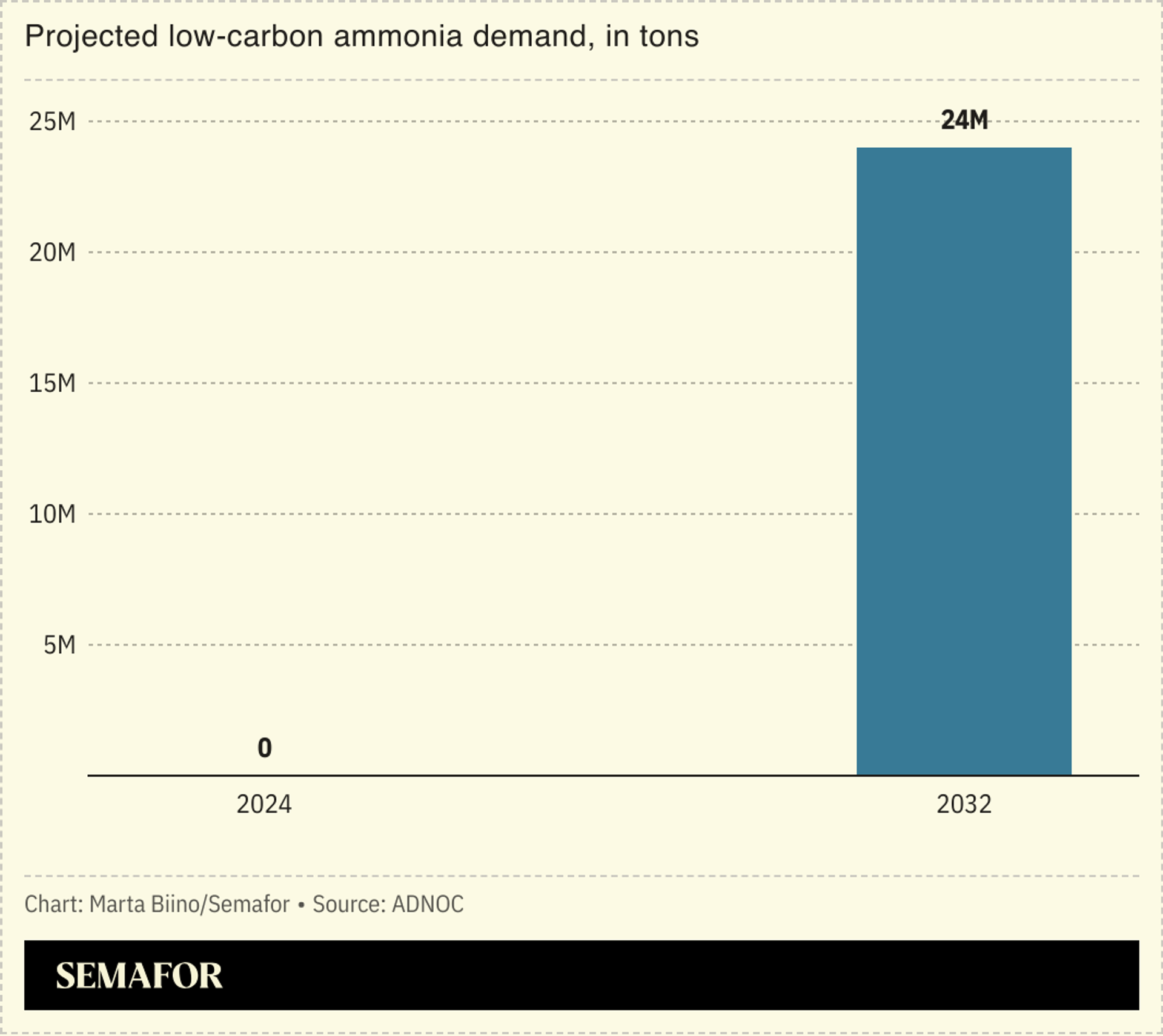The News
ADNOC’s acquisition of a majority stake in Fertiglobe in a $3.6 billion deal announced Wednesday is a step toward consolidating its ammonia production, part of its plan to capture 5% of the global low-carbon hydrogen market by 2030.
Fertiglobe currently produces 1.6 million tons a year of ammonia in facilities in Algeria, Egypt, and the UAE. ADNOC, the Abu Dhabi National Oil Co., plans to transfer two new plants it operates in the emirate to the company, which will boost Fertiglobe’s annual output to nearly 4 million tons, Fertiglobe’s Chief Executive Officer Ahmed El-Hoshy said in an interview.
This is just a fraction of the projected demand for low-carbon ammonia by 2032. “Clean ammonia demand — which today is effectively zero — is going to rise to 24 million tons.
That’s a huge change,” El-Hoshy said.

In this article:
Know More
Almost 80% of Fertiglobe’s ammonia output is used in agriculture, with the rest going to industrial applications, such as making nylon, building materials, and healthcare products.
But ammonia — composed of three hydrogen and one nitrogen atoms — is considered an efficient carrier of hydrogen, which is seen as a necessary fuel to decarbonize heavy industry and some parts of the transportation sector.
Ammonia production is more emissions-intensive than steel and cement, according to the International Energy Agency. The shift to lower-carbon hydrogen production methods — such as using renewable energy to split water molecules — is expected to drive demand for hydrogen as a replacement for coal, oil, and natural gas.
To get there, the market structure for ammonia will evolve from spot contracts in agriculture to longer-term agreements similar to those seen in liquefied natural gas, which are favored by utilities and industrial customers, El-Hoshy said. This shift will allow producers to invest in output and hedge spot volumes as long-term demands become clear.
Fertiglobe recently struck such a contract, selling €397 million, or about $432 million, of renewable ammonia to a customer in Europe that will be delivered until 2033.
ADNOC’s deep network in the energy sector is a big advantage for Fertiglobe, El-Hoshy said. “It’s really an opportunity to cross-sell and establish long-term contracts and agreements. I think we will be well received by big industrial customers.”
Mohammed’s view
The move downstream into chemicals is a recurring theme for the region’s national oil companies. Historically, these companies were content extracting crude and leaving the processing to their customers. They sacrificed some margin, but avoided considerable capital expenses and market volatility.
While there’s still some debate as to when oil demand will peak — with OPEC the bullish outlier — the UAE’s president anticipates a future beyond oil: In 2015, he said the nation will eventually celebrate shipping its last barrel. ADNOC and other Gulf producers want to pump those final barrels, and are securing major stakes in global petrochemicals that will still need hydrocarbons to make plastics and medicines.
Fertilizers are also irreplaceable, and future demand for hydrogen — though often overhyped — is nevertheless real enough to drive investments and acquisitions downstream. So if you’re a banker or trader in this space, there’s more action coming.
Notable
- The IEA explains ammonia production and its applications.
- University of Pennsylvania’s Kleinman Center for Energy Policy dives into ammonia’s role in the hydrogen economy.
